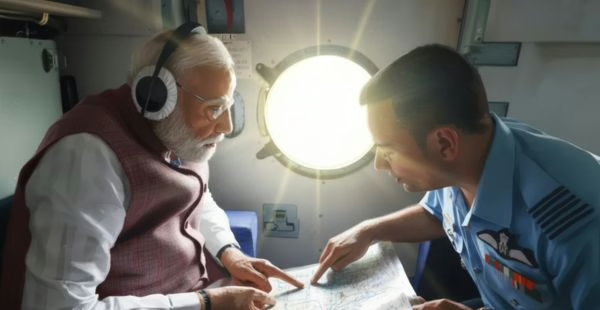Severe Flooding Hits Himachal Pradesh
Himachal Pradesh Floods 2025 – Himachal Pradesh has recently experienced intense rainfall, resulting in widespread flooding across several districts. The Mandi Kullu Floods have particularly affected these regions, with rivers overflowing and landslides obstructing key roads. Local administrations and disaster response teams are actively monitoring the situation and providing assistance to affected communities.
PM Modi Conducts Aerial Survey
In response to the floods, PM Modi conducted an aerial survey over the affected areas. Aerial surveys provide a clear view of flood-affected villages, damaged infrastructure, and areas cut off by landslides. This information helps authorities plan and coordinate relief efforts efficiently.
Mandi Kullu Floods Disrupt Daily Life
The Mandi Kullu Floods have caused significant disruption to local communities. Continuous heavy rainfall has raised river levels and triggered multiple landslides, isolating remote areas. Roads and bridges have been damaged, affecting transportation and relief operations. Authorities have established temporary shelters to provide food, medical aid, and safe accommodation for displaced families.
Understanding Himachal Rainfall 2025
Meteorologists report that Himachal Rainfall 2025 has exceeded historical averages, with cloudbursts intensifying flooding in several districts. While monsoon rains are a regular seasonal occurrence, the combination of prolonged heavy rainfall and sudden cloudbursts has created significant challenges for local authorities. Continuous monitoring and accurate forecasts are being used to guide disaster response measures.
Human Impact: Himachal Flood Casualties
According to official reports, the floods have resulted in Himachal Flood Casualties, with several individuals displaced or injured. Search and rescue operations remain ongoing in affected areas. Families impacted by the floods are receiving support through medical assistance, temporary shelters, and financial aid. These efforts aim to help communities manage the immediate consequences of the disaster.
Infrastructure and Relief Efforts
The aerial survey highlighted damage to roads, bridges, and essential services in Mandi and Kullu. Central and state agencies are coordinating to ensure that relief supplies and rescue teams reach areas in urgent need. This coordination supports the timely delivery of aid to communities affected by the Mandi Kullu Floods.
Long-Term Planning and Preparedness
The floods emphasize the importance of long-term disaster preparedness. Strengthening flood management infrastructure, implementing effective early warning systems, and developing sustainable community preparedness plans are key strategies for reducing risks in the future. Insights from aerial surveys and on-ground assessments, including those from PM Modi’s aerial survey, guide these efforts.
Community Engagement
Community participation has been essential in responding to the floods. Local volunteers, NGOs, and residents are assisting in distributing supplies, evacuations, and supporting affected families. Public awareness campaigns on safety measures, evacuation routes, and relief services have helped communities cope with the Mandi Kullu Floods and related disruptions.
Conclusion
The Mandi Kullu Floods have caused significant disruption, particularly in Mandi and Kullu. The PM Modi aerial survey provided an overview of affected areas, helping authorities plan relief efforts. Monitoring Himachal Rainfall 2025, addressing Himachal Flood Casualties, and encouraging community engagement remain essential in managing the current situation and mitigating future risks.

